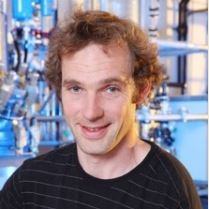Structure, Functions, and Uses of Oil Bodies
A special issue of Biomolecules (ISSN 2218-273X). This special issue belongs to the section "Biomacromolecules: Lipids".
Deadline for manuscript submissions: closed (30 June 2022) | Viewed by 2912
Special Issue Editors
2. Biological Engineering Department, Paul Sabatier University, 32000 Auch, France
Interests: cereals; oilseed crop; plant physiology; plant breeding; abiotic stress; bioactives accumulation
Special Issues, Collections and Topics in MDPI journals
Interests: soft materials; biosourced polymers; plant proteins; lipid droplets/Oleosomes
Special Issue Information
Dear Colleagues,
Seeds are plants’ organs of resistance to environment adversity. In order to ensure the survival of the species, the structure of the seeds was built to give the energy necessary for the restarting and development of the embryo. Reserves are stored in different forms, such as starch or lipids. Lipids are stored in spherical organelles named oleosomes, oil bodies or lipid droplets. These organelles contain natural oils, stored in the form of triacylglycerols for use during the germination process. The stability of the triacylglycerol reserves is ensured by a membrane of phospholipids associated with unique proteins named oleosins. The exceptional stability of oleosomes has attracted growing interest in understanding their properties, function, and uses. However, their physicochemical characteristics appear to be dependent on many external and intrinsic factors.
The objective of this call for papers is to provide knowledge on:
- The structure of oleosomes;
- Their diversity both among species, organs, and between genotypes;
- The impact of the environment (stress) on their formation, composition, conservation, etc.;
- Their extraction and valorization by different chemical or physical means;
- Future potential of oil bodies and industrial prospects;
- Their conservation in different forms.
Dr. Othmane Merah
Dr. Constantinos V. Nikiforidis
Dr. Romain Valentin
Guest Editors
Manuscript Submission Information
Manuscripts should be submitted online at www.mdpi.com by registering and logging in to this website. Once you are registered, click here to go to the submission form. Manuscripts can be submitted until the deadline. All submissions that pass pre-check are peer-reviewed. Accepted papers will be published continuously in the journal (as soon as accepted) and will be listed together on the special issue website. Research articles, review articles as well as short communications are invited. For planned papers, a title and short abstract (about 100 words) can be sent to the Editorial Office for announcement on this website.
Submitted manuscripts should not have been published previously, nor be under consideration for publication elsewhere (except conference proceedings papers). All manuscripts are thoroughly refereed through a single-blind peer-review process. A guide for authors and other relevant information for submission of manuscripts is available on the Instructions for Authors page. Biomolecules is an international peer-reviewed open access monthly journal published by MDPI.
Please visit the Instructions for Authors page before submitting a manuscript. The Article Processing Charge (APC) for publication in this open access journal is 2700 CHF (Swiss Francs). Submitted papers should be well formatted and use good English. Authors may use MDPI's English editing service prior to publication or during author revisions.
Keywords
- oil bodies
- oleosomes
- lipid droplets
- oil droplets
- self-assembled systems
- oleochemistry
- green chemistry
- surfactants
- biosourced products
- oleosins
- caleosins
- stereoleosins
- ultrastucture
- genetics, molecular studies
- specific diversity
- genotypic variability
- extraction methods
- catalysis
- food and non-food applications
- chemical and biological stability
- vectorization and protection of active ingredients
- antioxidant activity
- formulation
- conservation
- applications








